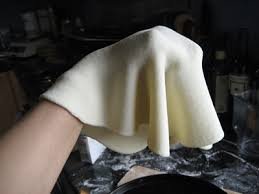-
Posts
818 -
Joined
-
Last visited
Content Type
Profiles
Forums
Gallery
Events
Posts posted by woodrat
-
-
1 hour ago, druxey said:
Might I suggest using acrylic matt medium rather than white glue? Then, if necessary you can dampen areas of the sail to reshape them without anything falling apart.
Druxey, I don't know what brand of medium you use but the one I bought did not hold its strength when rewet. I can keep trying and pick the best looking sail.

-
The second cunning plan was not quite as cunning as a cunning plan could be.
Silkspan was wet and stretched on a frame the painted with dilute acrylic. Taken off the frame molded and set with medium.
the silkspan did not have enough strength when removed from the mold to hold the complex shape.
But..... nil desperandum. The third cunning plan has gone a bit better so far
I used vertical strips of calligraphy paper over the mold with white glue. Then horizontal strips of silkspan over that.
Dry and detach from mold
Seems to be holding its shape. Ready for reinforcements and boltropes.
Dick
-
My cunning plan is so cunning even a cunning person wouldn't think of it. It's so great...
Yes Druxey, I will varnish it and coat with mold release.
- druxey, JesseLee, CaptainSteve and 1 other
-
 4
4
-
As a first step in my cunning plan I have made a mold from plaster of Paris, cunningly using a Frascati bottle as a shaper.
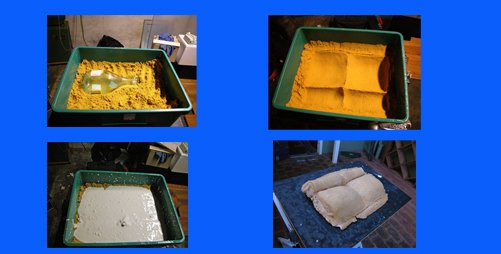
The rough mold is shaped with files and sandpaper
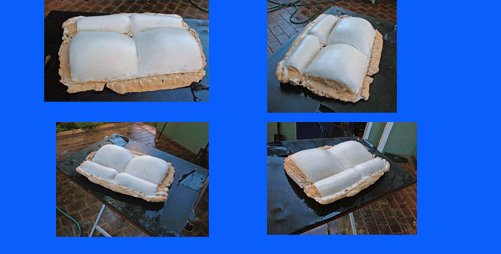

Cheers
Dick
- hexnut, archjofo, CaptainSteve and 6 others
-
 9
9
-
I have a cunning plan which cannot fail............
Druxey, I will try your technique and report back. I knew this was going to be a sticking point.
Attached here are some scale figures carved by Louie da Fly, thanks Steven. He has kindly donated them to the build.
The first figures are of the Doge Cristoforo Moro, the owner of the ship who is clearly deeply displeased with a somewhat hapless courtier, perhaps his private secretary.
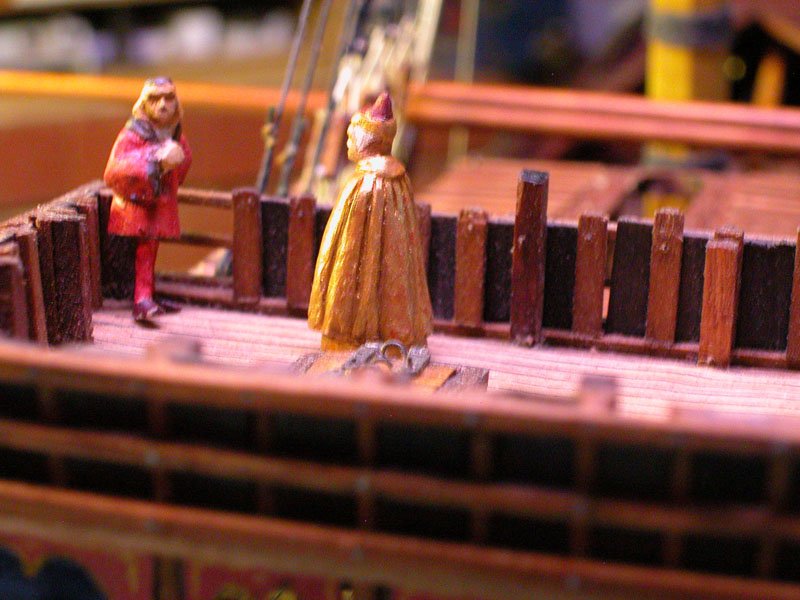
below, a tar hauls on a rope.
Dick
-
26 minutes ago, druxey said:
Compound curves are a challenge. Had you considered molding a large piece of soaked SilkSpan and then adding the seams and reinforcements when dry?
You are much too polite, Druxey. What you mean to say is: do the homework again! I had considered that method but I have given up on papier mache. Maybe a plaster or clay mold would be easier. Nonetheless I will hang the yard and see what this version looks like on the ship
-
After laughable escapades with papier mache and somewhat obscene balloon constructions, the dog ate my mold, really, honest!
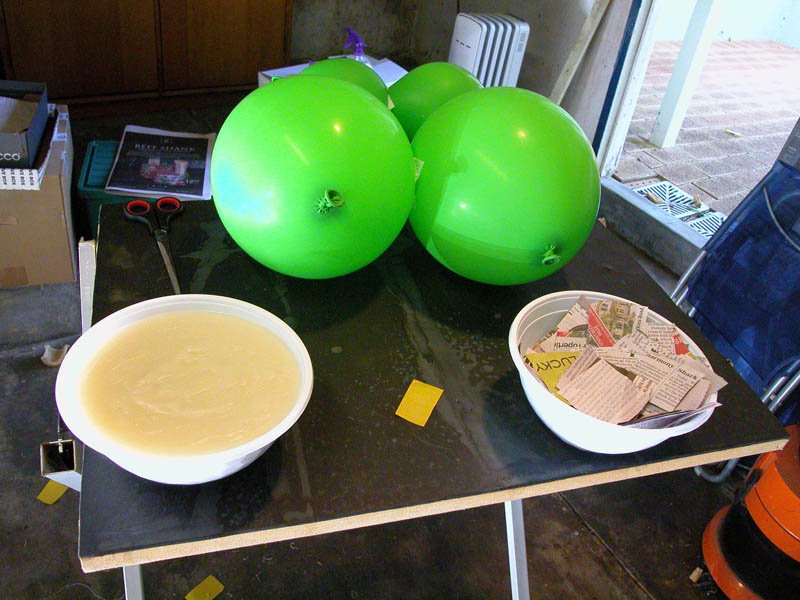
So.. I decided to repair and resurrect my first attempt. This was paper strips. After repair, I added Silkspan strips glued transversely to the front of the sail while molding with a Frascati bottle (emptied first).
The resulting mainsail is not perfecto but it gives a reasonable impression of a 15th century mainsail.
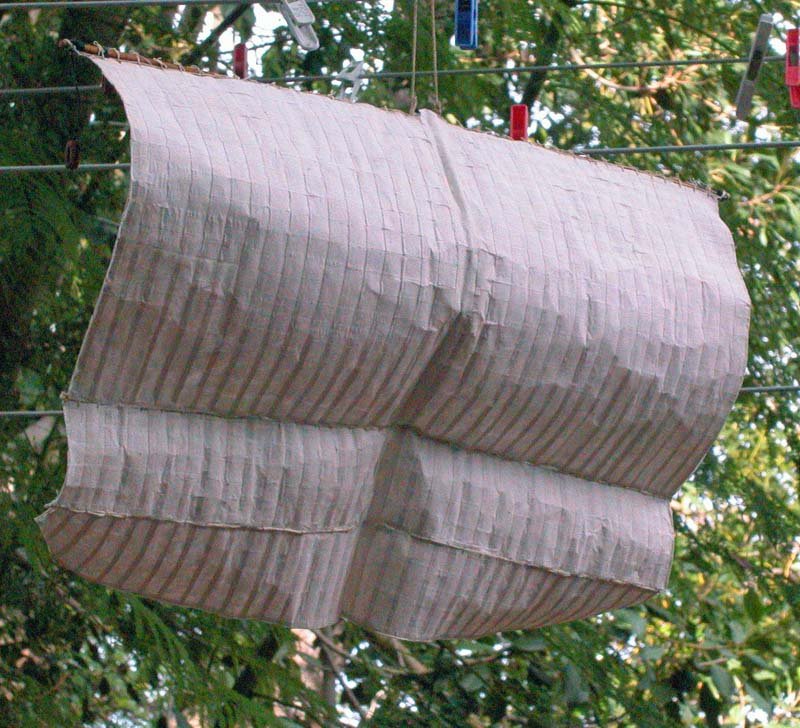
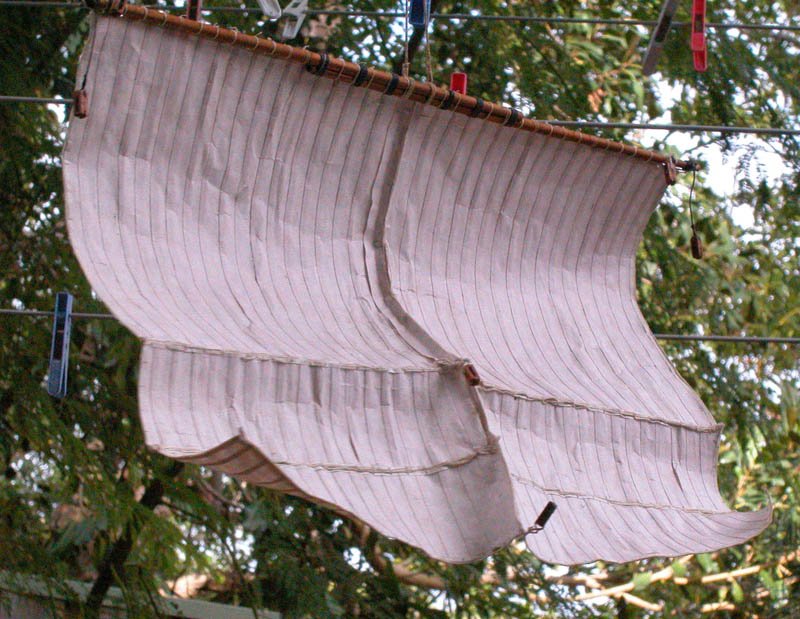

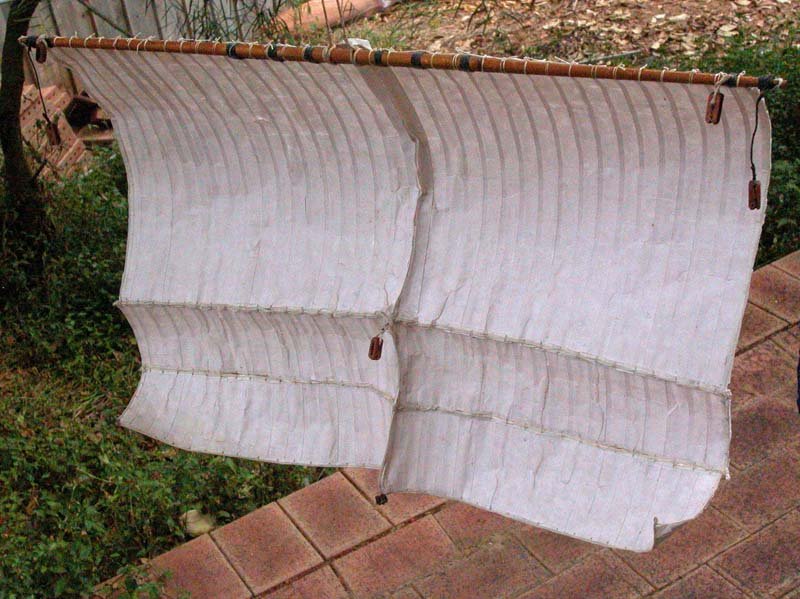
prior to attaching to mainmast, I must finish the maintop. This is the base of it.
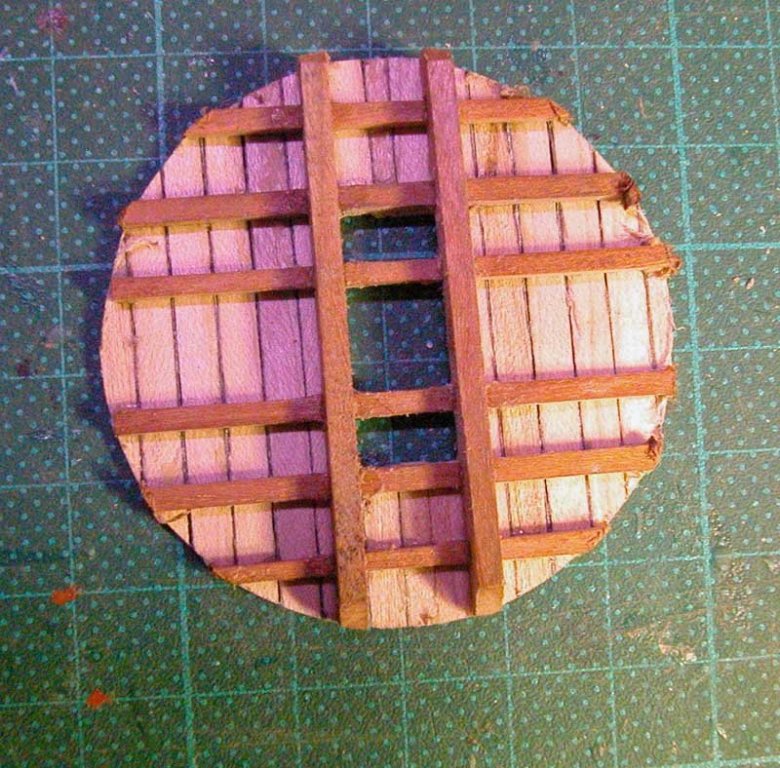
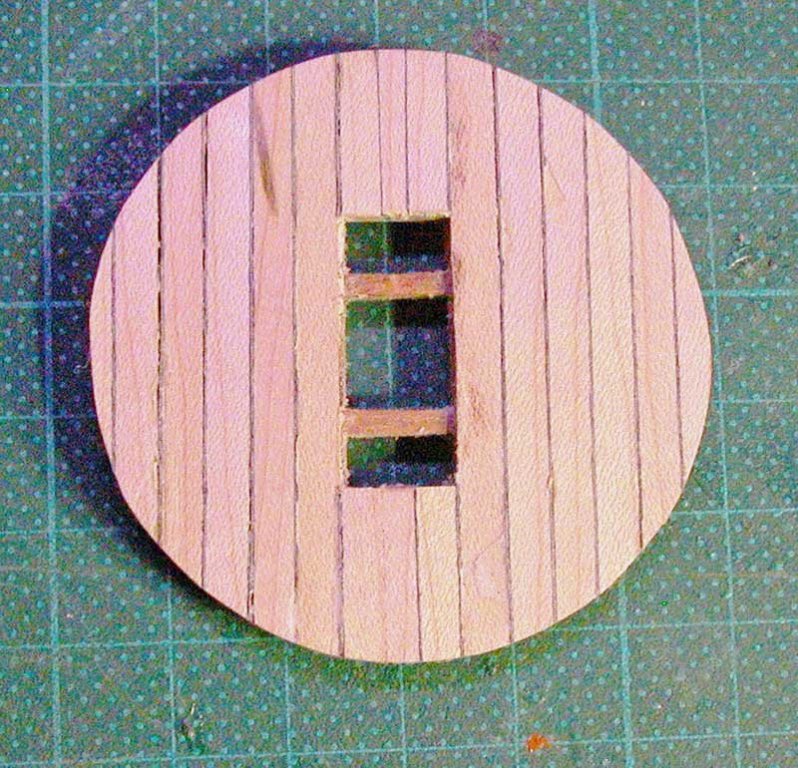
-
On 2017-5-7 at 11:32 AM, Louie da fly said:
Currently I’m at the limit of the detail I can put in just wearing my normal glasses. If I wanted to improve it I’d have to invest in a super-duper magnifying glass, which I’m not prepared to do.
Steven
Steven, I use loupes for all fine work. There are very good magnifying headsets on the market which are not expensive. Better than eyestrain I say.
Dick
- mtaylor, Gerhardvienna and Eddie
-
 3
3
-
3 hours ago, druxey said:
Perhaps one of your Aussie model compatriots with a miniature saw could volunteer to cut planking stock accurately for you? (I know that Oz is very strict about importing wood or other vegetable matter).
I could do this with my Byrnes saw if you let me know dimensions and wood type.
Dick
- Louie da fly, druxey, CaptainSteve and 2 others
-
 5
5
-
Steven, great progress and looking fine. I would be careful about extrapolating colours from a mediaeval manuscript to the model. The monk was probably using whatever colours were in the scriptorium. I take your point that it does suggest colours were used. However, most hulls were probably paid with tallow and hair to above the waterline so colouring would be used sparingly above this level. Sailors have always liked their ships pretty.
Dick
- Eddie, CaptainSteve, mtaylor and 1 other
-
 4
4
-
13 hours ago, cog said:
Dick,
I read on another forum, someone used paper handkerchiefs and formed them over a baloonish formed bottle (something like the Chianti "basket" bottles) Can't recall whether he used white glue or something else
Thanks Carl. That sounds like a form of papier mache which could work. Thats sort of what I had in mind but I need to experiment a bit with materials and molds. Wish me luck.
Cheers
Dick
-
12 hours ago, druxey said:
It is possible to mold paper to shape over a form. Some varieties of Japanese paper might work well for this, Dick.
Yes, thanks Druxey. A mold is required as you say. I have to experiment a little. As you can see, the central part of the mainsail and bonnet is pulled back toward the mast by a type of lanyard to prevent the sail rubbing on the mainstay. This produces a complex curve unlike those seen on ships of later centuries
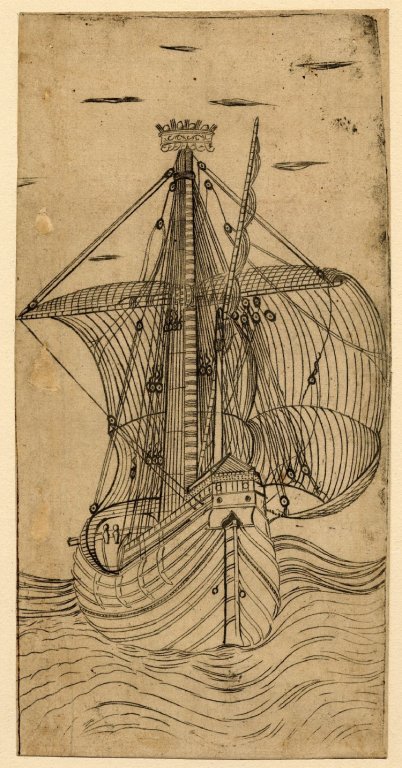
- JesseLee, druxey, MarisStella.hr and 3 others
-
 6
6
-
Oh Dear! That didn't work
 . I should have known that paper would not support a curve in two planes at once. Back to plan B I think. If plan B fails the sail furls. I thought the vikings were using woollen sailcloth which would explain the need for quilting.
. I should have known that paper would not support a curve in two planes at once. Back to plan B I think. If plan B fails the sail furls. I thought the vikings were using woollen sailcloth which would explain the need for quilting.
Dick
- mtaylor and Louie da fly
-
 2
2
-
It is actually number 100 thread glued to the paper. If you look at some illustrations e.g.
 the cross hatching is only on the front and not visible on the back. This suggests to me some form of small calibre rope has been sown to the front of the sail. Are there any other possibilities?
the cross hatching is only on the front and not visible on the back. This suggests to me some form of small calibre rope has been sown to the front of the sail. Are there any other possibilities?
I may put a simple cross on the mainsail but will not do more
Cheers
Dick
- cog, Salty Sea Dog, Farbror Fartyg and 3 others
-
 6
6
-
Here be the mainsail and two bonnets ready to be connected. Many illustrations show the cross stitching
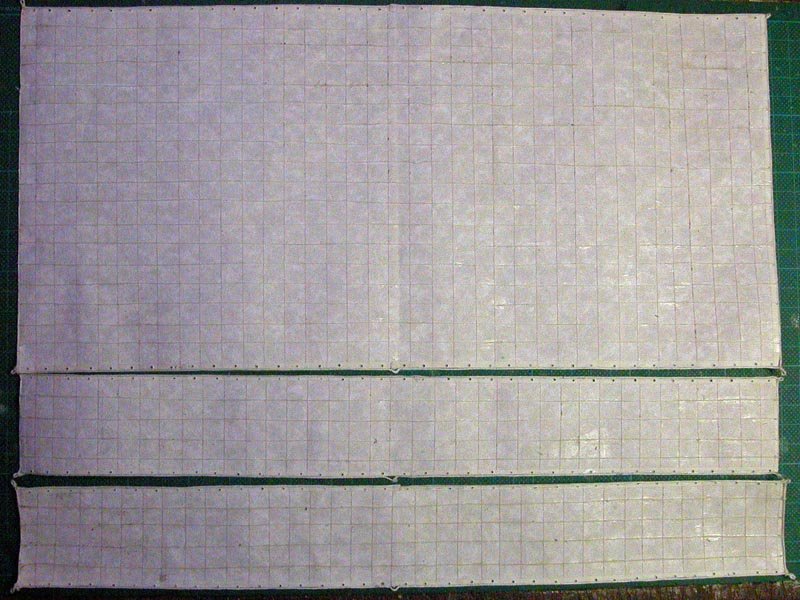

- Farbror Fartyg, hexnut, cog and 8 others
-
 11
11
-
I regret to say, Steven, that I bought the sheaves, although I did blacken them myself. The paper I am trying is acid free calligraphy paper which is a bit like vellum. It is an experiment and may end in tears (pun!)
This shows the paper strips glued with acid-free clear glue. I will do a mainsail with 2 bonnets. One of my other hobbies is bookbinding so this feels OK to me.
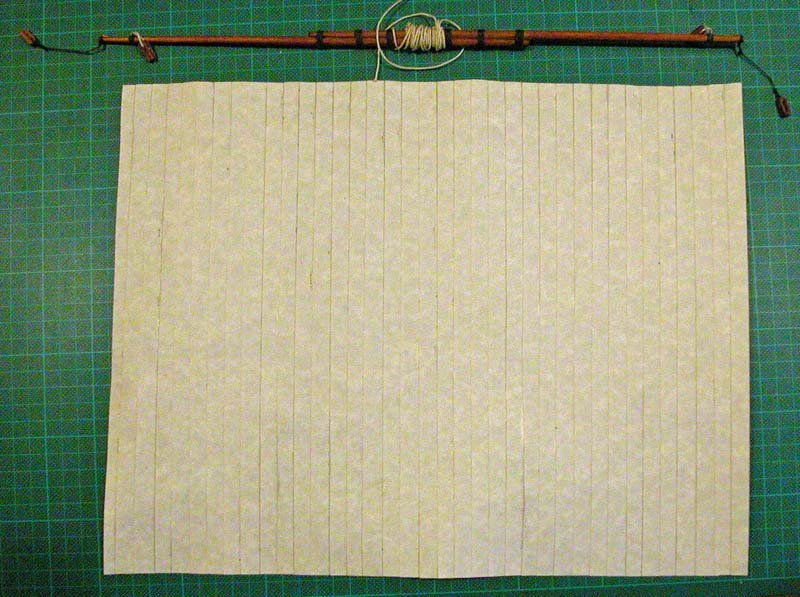
Dick
-
-
before singeing
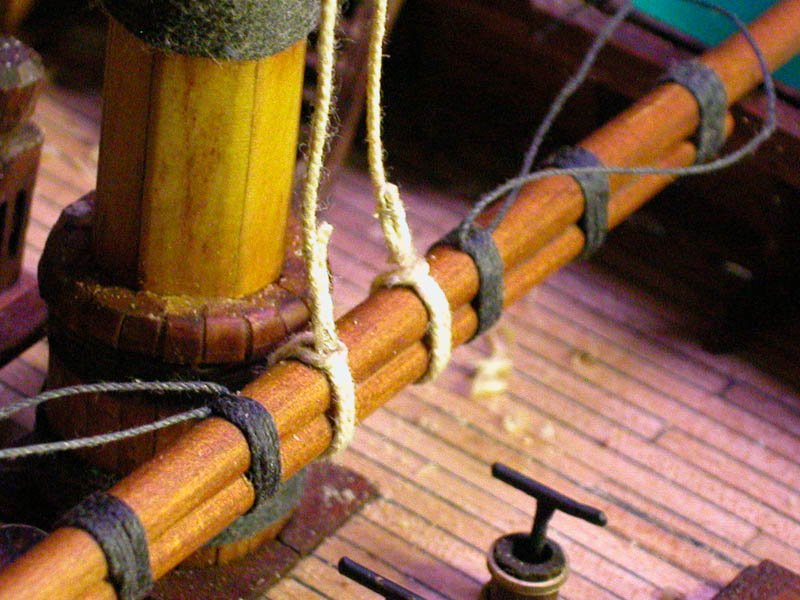
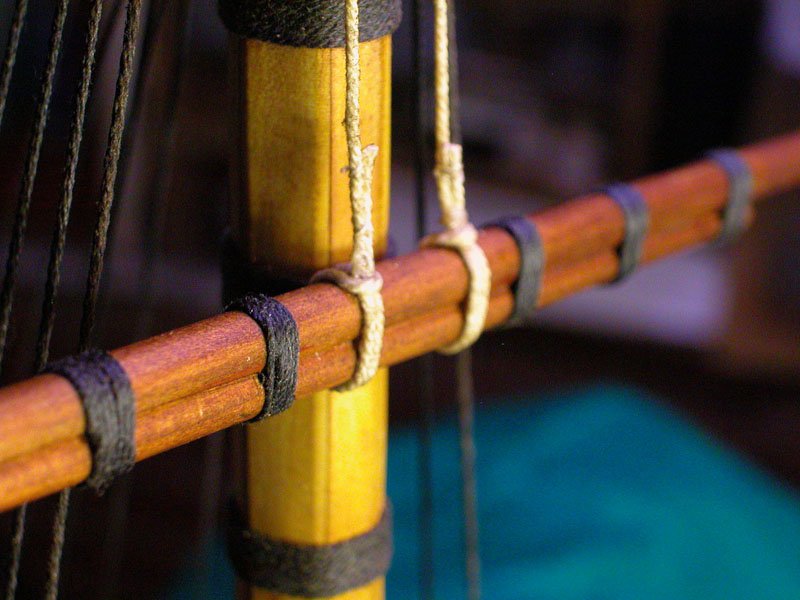 after singeing
after singeing
it looks better to me

Dick
-
Thanks Druxey. I did wax the halliards but I might try your singeing. I used a different line which is inferior. I will redo it.
- CaptainSteve, mtaylor, druxey and 1 other
-
 4
4
-
-
Yes, four rows of parrels. However, the problem is how to attach them in such a way as the parrels can be loosened and tightened as required for adjustment of the position of the yard on the mast. Many of the contemporary illustrations show the yard positioned at varying distances from the top. This may have been a way to adjust for varying wind strengths and directions (?)
Dick
This is one of the best illustrations of running rigging to the mainsail
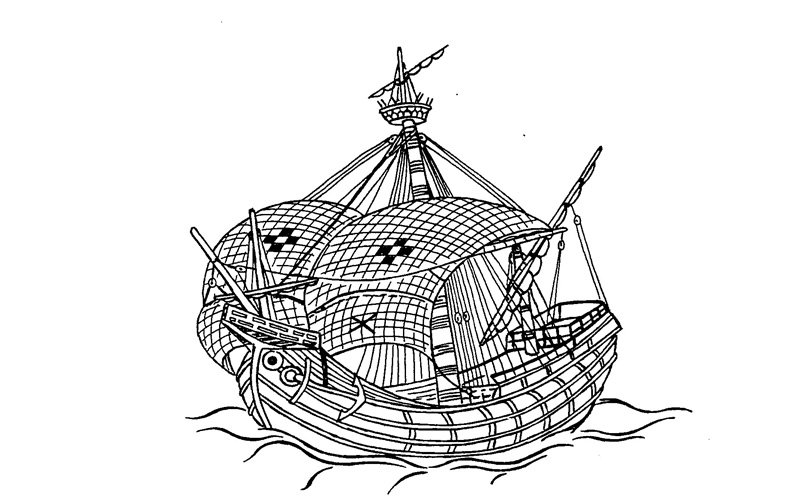
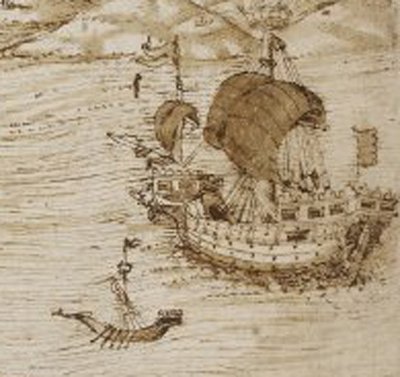
- shipmodel, Louie da fly, firdajan and 5 others
-
 8
8
-
On 10/03/2017 at 4:36 PM, Matle said:
For what it's worth, I remember an original drawing of an 18th century Swedish galley showing the same concave-convex arrangement on the joint of the two halves of each yard. So it seems like a persistent technology.
Yes. It survived well into last century as this photo of a dhow from 1972 attests.
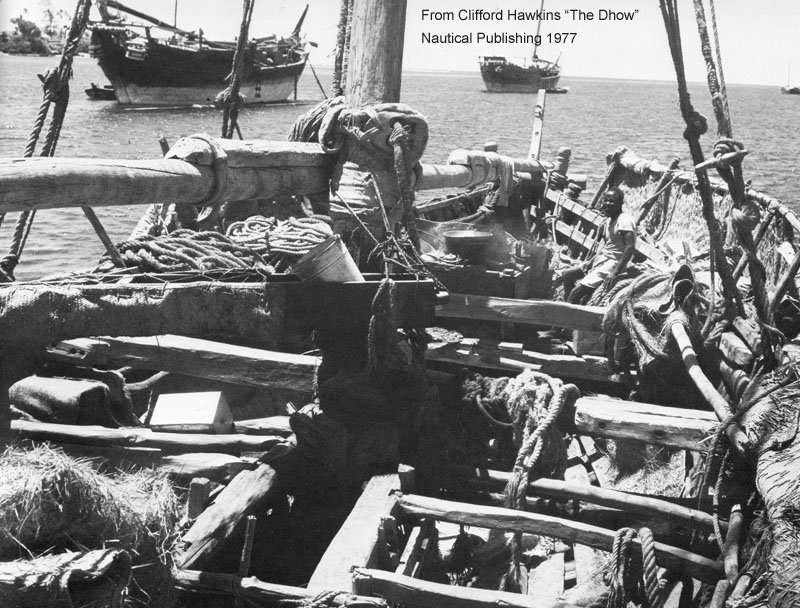
This the mainyard ready to be swayed up
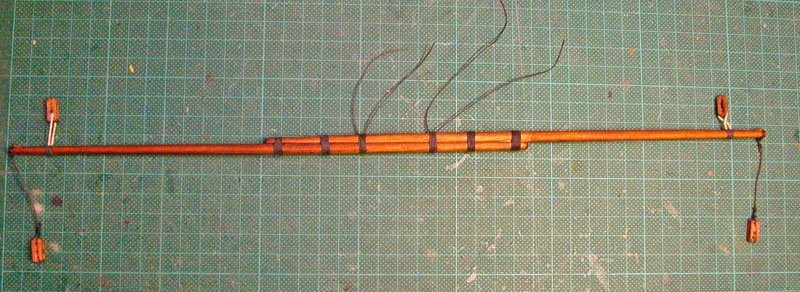
-
Flat surfaces would be subject to shear forces and would need reinforcement with trenails , bolts or nails, all of which would weaken the wood and lead to splitting. the concave /convex joint reinforced with rope is strong and not rigid. Moreover iron hoops are difficult to make and apply and rope is readily available and cheap.
Dick
-
The next step is the mainyard. In mediterranean vessels the mainyard was made of 2 spars bound together. The combined length is approximately the length of the keel and the two spard overlap by 50%. It is an error to apply 17th or 18th century preconceptions to these yards. They are very different and a lot longer than many Santa Maria models depict. Once again the paintings of Carpaccio come up as the best source. But even Carpaccio leaves things out, in this case the forestay.
The mainyard is held to the mast by parrels. The bigger the vessel, the more rows of parrels. In my case there will be four rows of parrels.
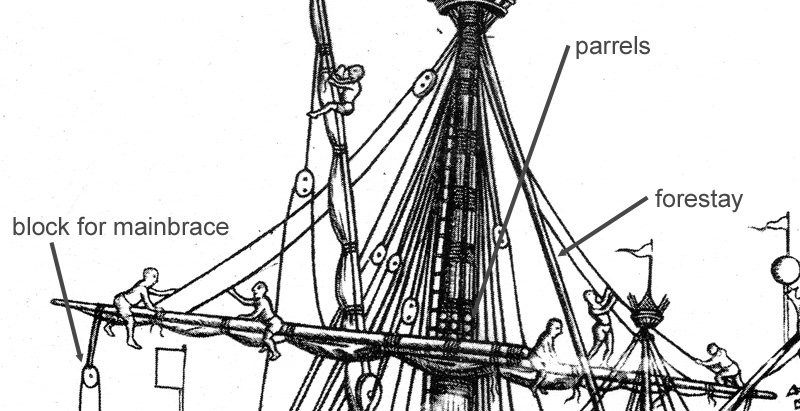


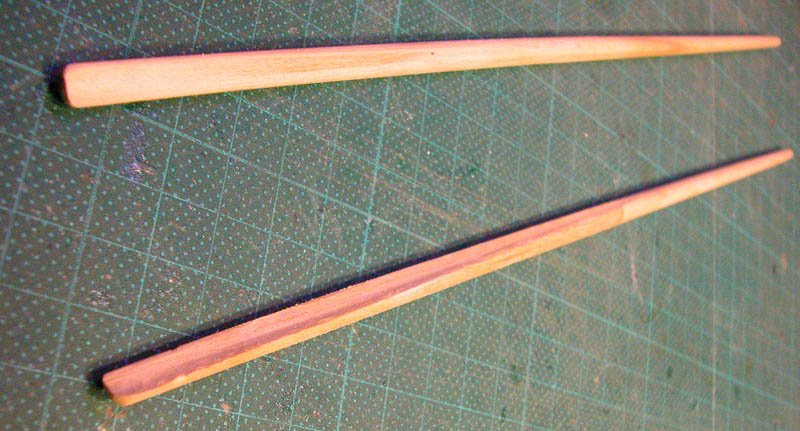
note that one spar has a concave cross section and the other convex





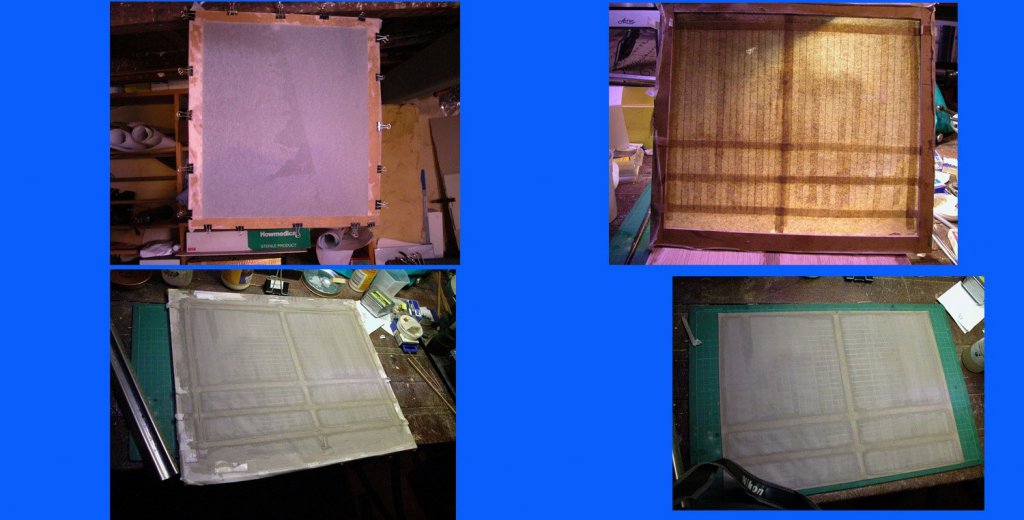
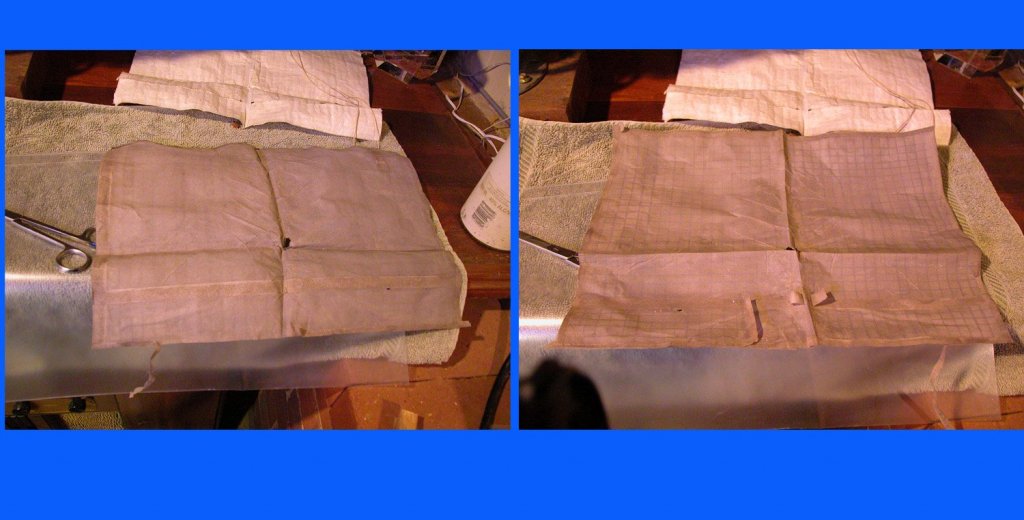
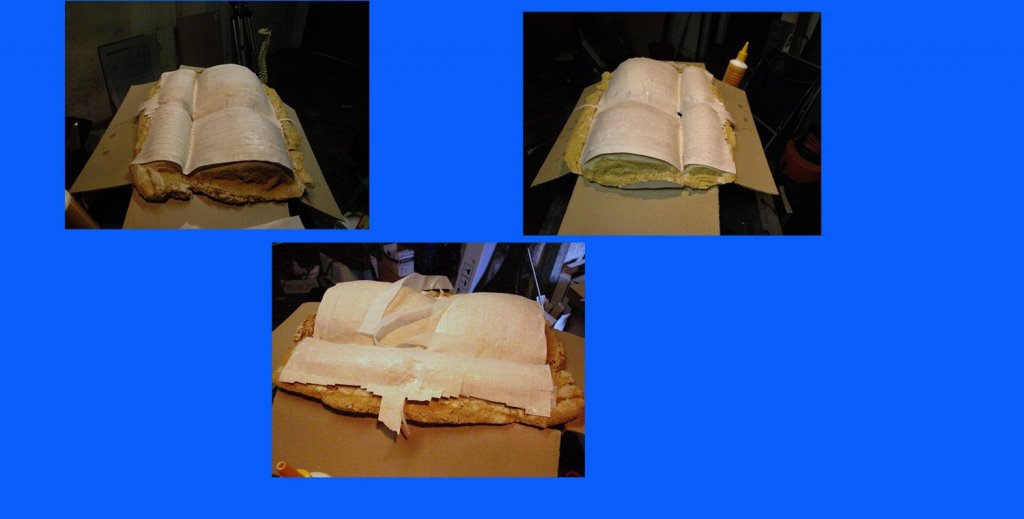
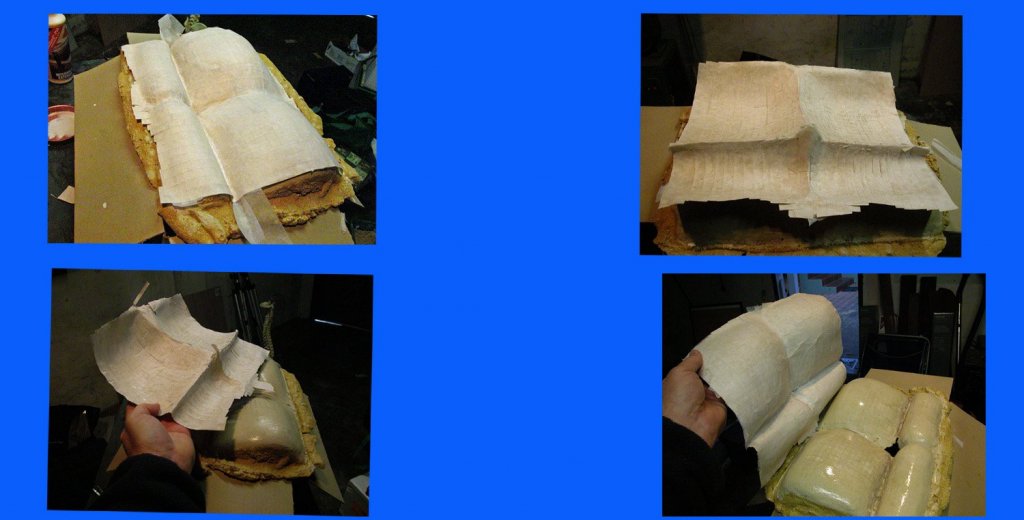
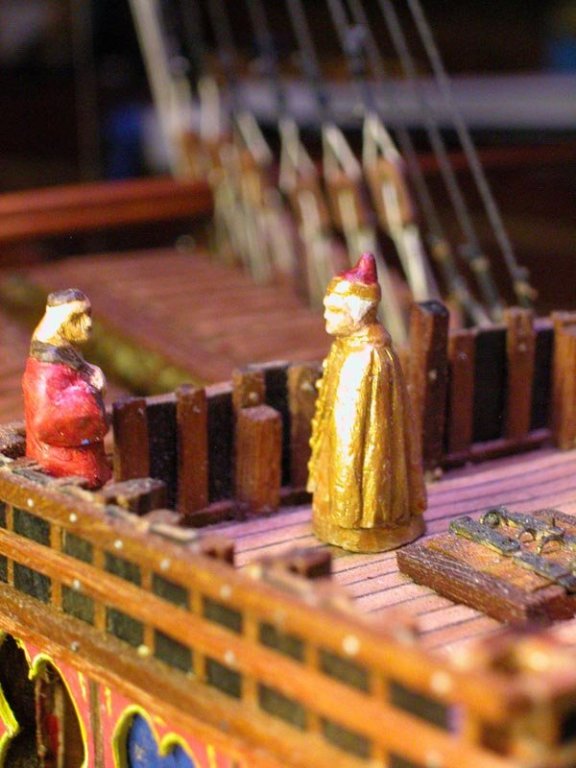
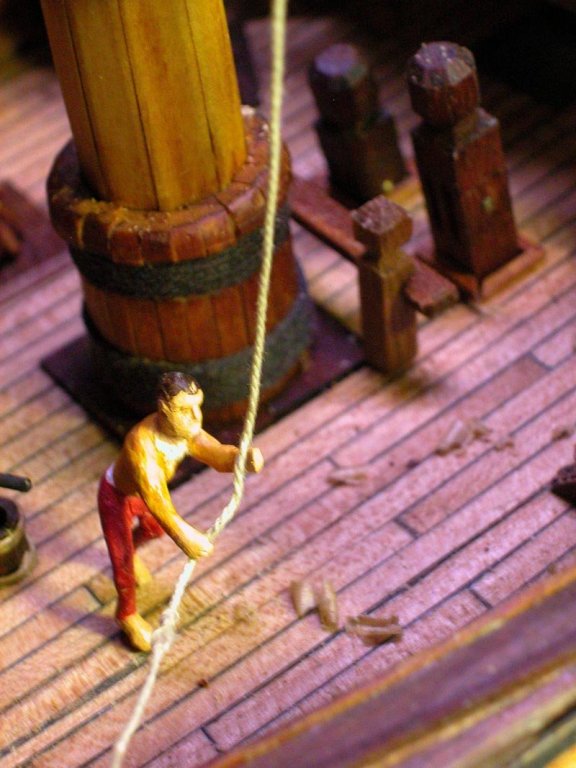
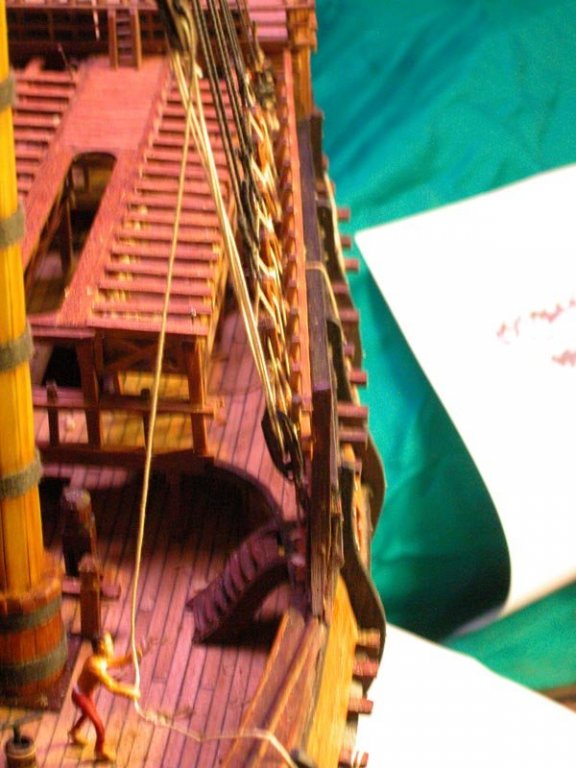

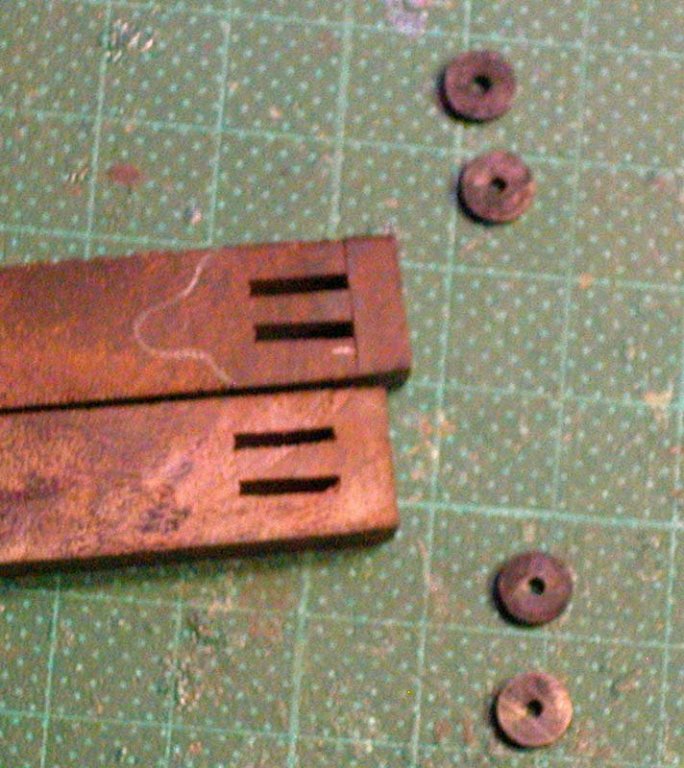
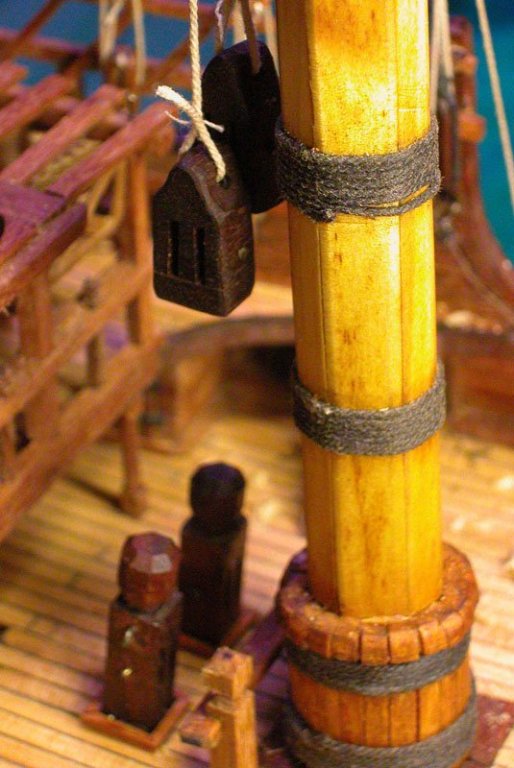
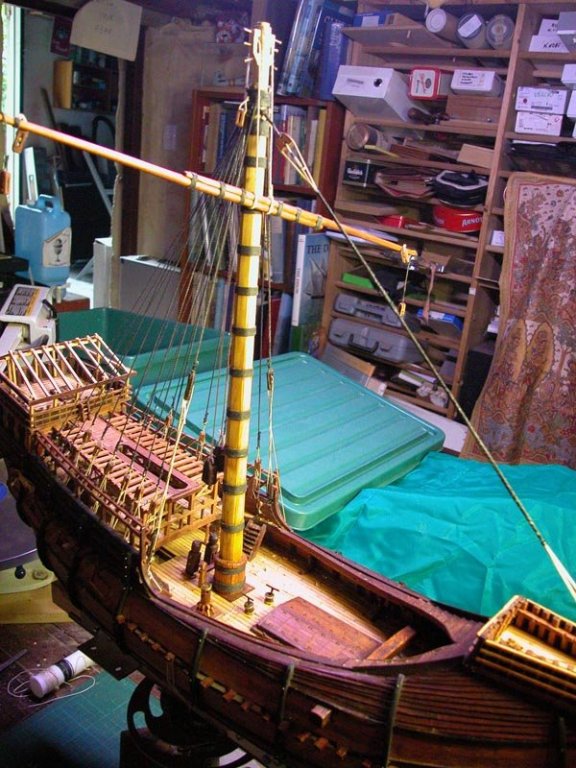

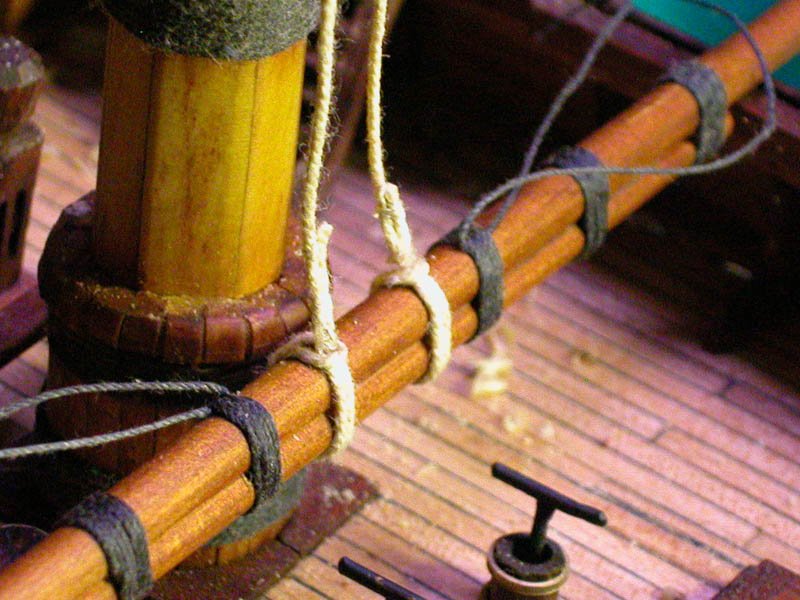
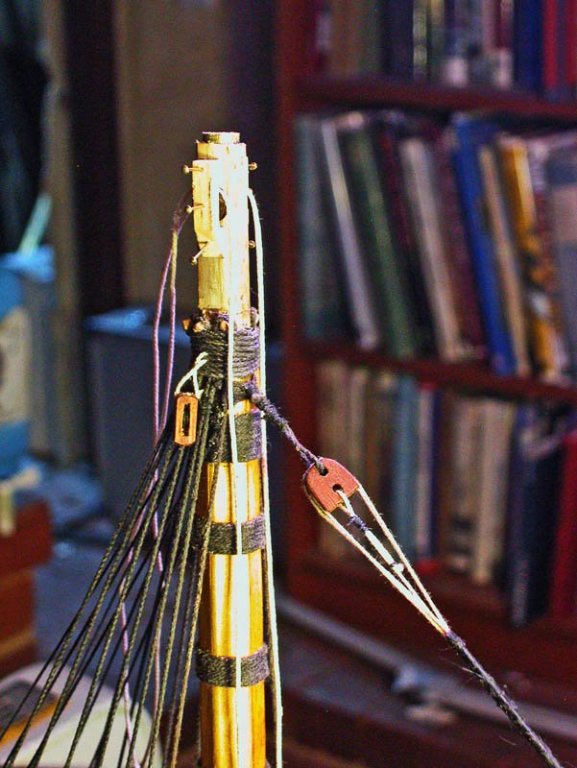
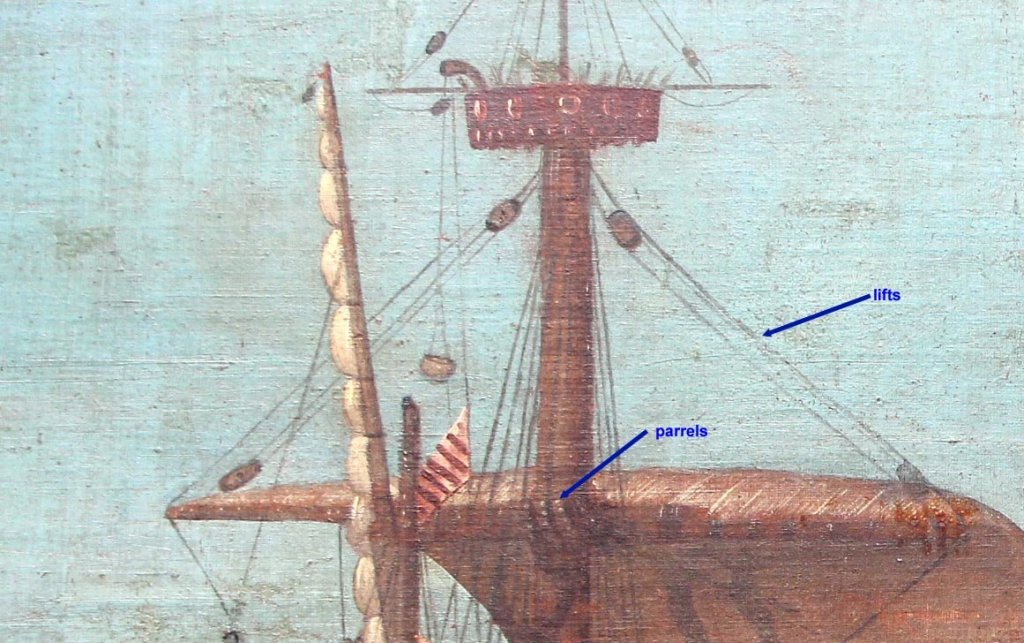
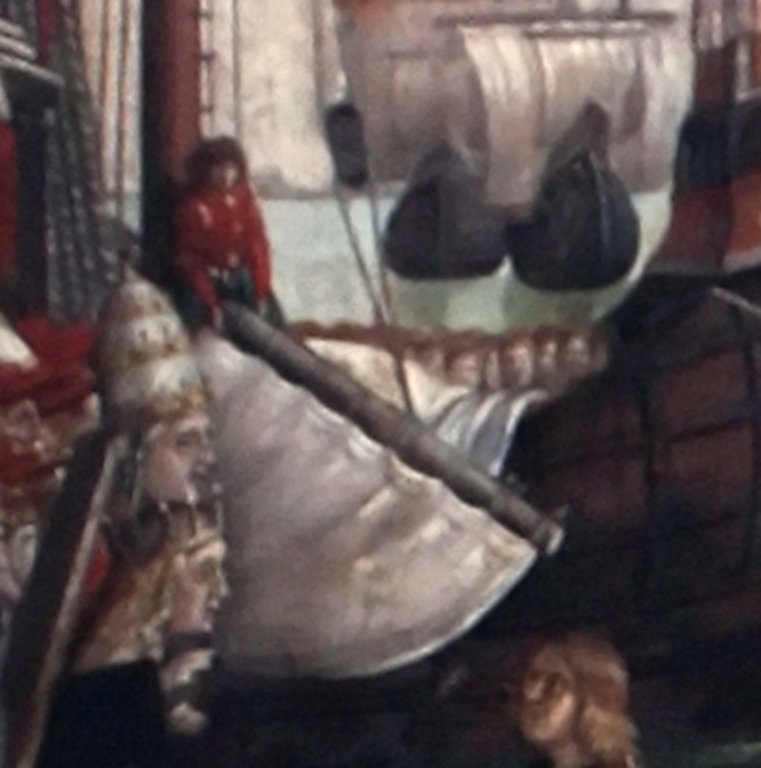
Venetian Carrack or Cocha by woodrat - FINISHED - 1/64
in - Subjects built Up to and including 1500 AD
Posted
thanks Druxey and Carl. The problem is making the construct stiff enough to maintain its shape against gravity. Experiments continue.
Dick